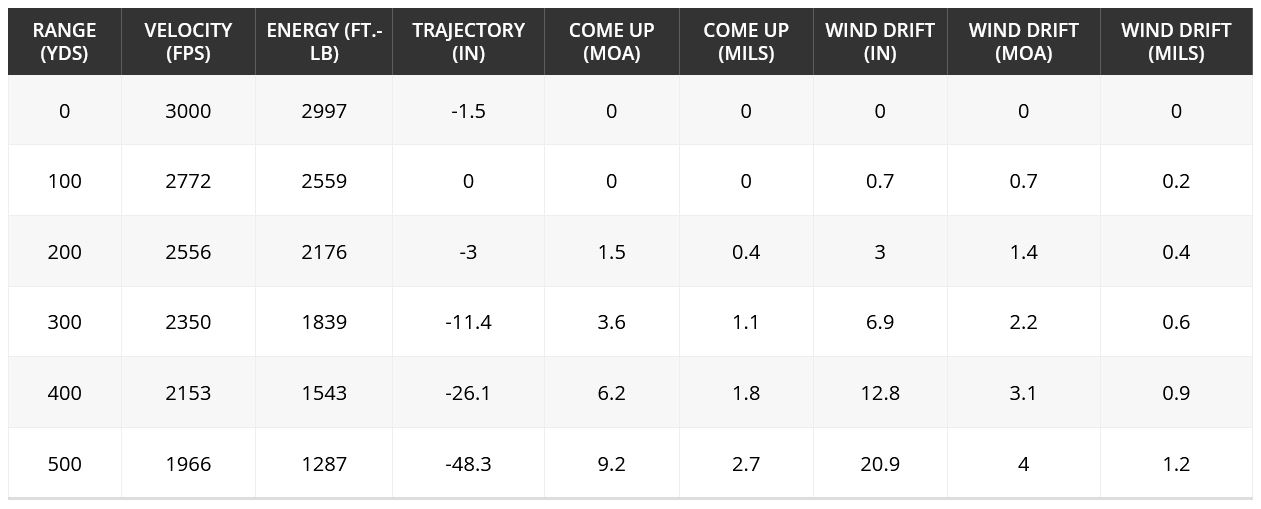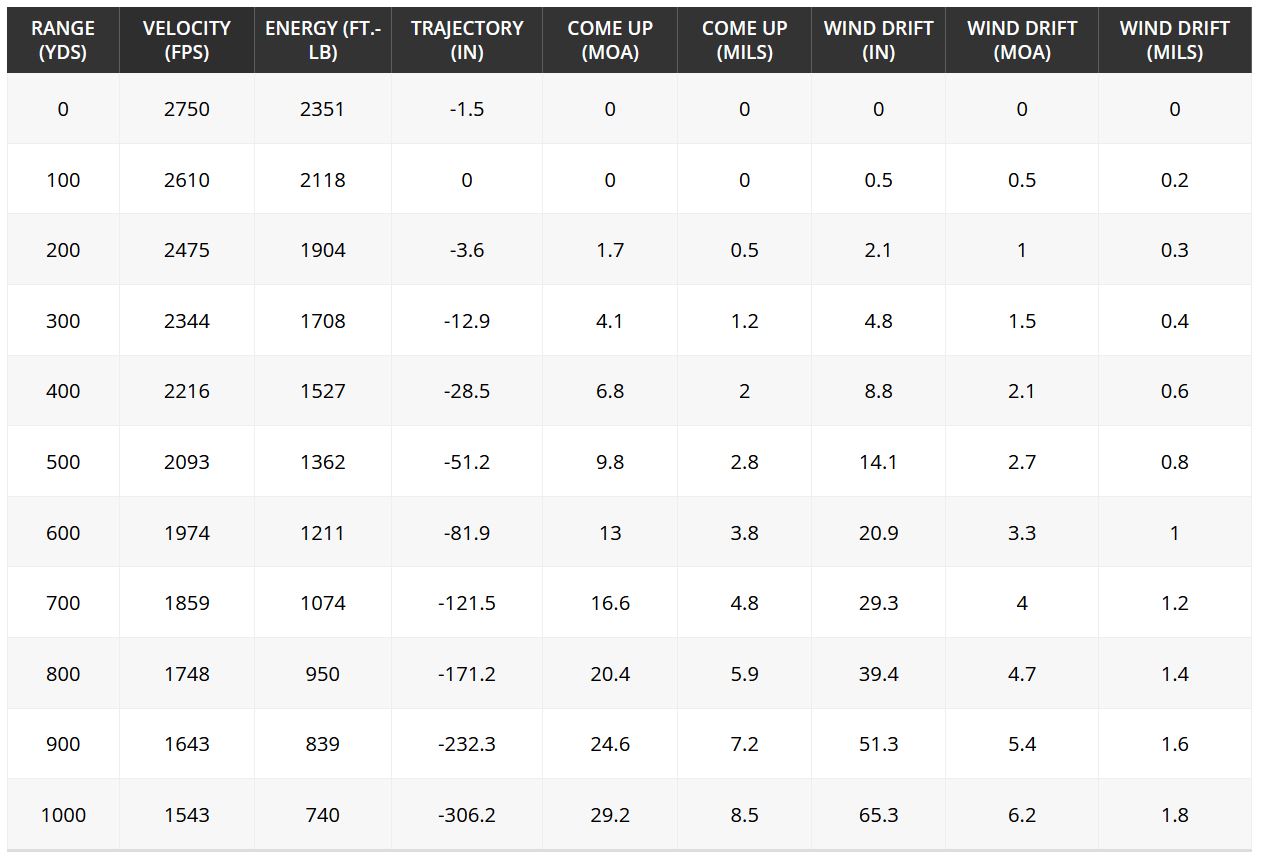What is Ballistic Coefficient? Bullet Accuracy Explained
Posted by Gunbuilders.com on Aug 12th 2024
The accuracy of your rifle depends on many factors. Most of those factors are in your control: Stance, grip, sight alignment, sight picture, trigger squeeze, breath control -- the list goes on. But one factor can act as a hard cap (or a potential cheat code) for improving accuracy: Ballistic coefficient, often simply called "BC."
What is Ballistic Coefficient?
Ballistic coefficient measures a bullet's ability to withstand air resistance in flight. Air resistance reduces the bullet's velocity, increasing bullet drop, and it unpredictably changes its point of impact. This loss of velocity, added drop, and unpredictable change in flight path all reduce accuracy.
The less a bullet is affected by air resistance, the greater its ballistic coefficient (BC), and the more accurately it can repeatedly strike the same point of impact with the same point of aim.
What Determines Ballistic Coefficients?
A bullet's weight and shape directly affect its ballistic coefficient. The more dense, narrow, and sleek a bullet is, the higher its BC.
Why is BC So Important?
To illustrate the importance of ballistic coefficient, let's compare two rifle rounds of the same grain weight and caliber: An old round-nose .308 Winchester, and a new Hornady Superformance SST .308. Both rounds weigh 150 grains. But the round-nose bullet has a ballistic coefficient of just .186, while the Superformance has a BC of .415.
By firing both rounds with a muzzle velocity of 3,000 FPS, and exposing both rounds to a 10 MPH crosswind downrange, we can compare their velocity and energy retention, bullet drop, and wind drift using a ballistic calculator (courtesy of Hornady).
.308 Ballistic Performance (.186 BC)

.308 Ballistic Performance (.415 BC)

Even at a close distance of 200 yards, the .415-BC bullet suffers 25% less bullet drop and retains nearly 25% more energy.
As the distance grows to 500 yards, the differences between both rounds' performance get extreme. The .186-BC bullet drops nearly twice as much -- over 7 feet feet, compared to the .415-BC bullet's 4 feet of drop -- and it loses three times as much energy, producing just 414 ft. lbs. of force compared to the .415-BC bullet's 1,287 ft. lbs. of force.
Wind drift also has a significantly greater effect on the lesser round. The .186-BC bullet drifts nearly 3 feet, while the .415-BC bullet drifts just 21 inches.
Why Ballistic Coefficient is King
You might think that sending a heavy, fast round downrange is the key to accuracy. But this is only true to an extent. To illustrate why ballistic coefficient truly is the most important factor in shooting performance, let's compare two more rounds: A .300 Winchester Magnum against a 6.5 Creedmoor.
The .300 Win Mag exits the muzzle at 3,100 FPS, while the 6.5 Creedmoor has a muzzle velocity of just 2,750 FPS. The Win Mag also weighs 180 grains, while the Creedmoor weighs just 140 grains.
But, importantly, the .300 Win Mag has a ballistic coefficient of .276, while the Creedmoor has a BC of .646.
.300 Win Mag Ballistic Performance (0.276 BC)

6.5 Creedmoor Ballistic Performance (0.646 BC)

The larger, faster, and more powerful .300 Win Mag may produce greater muzzle velocity and energy. But it's clear that the higher ballistic coefficient of the 6.5 Creedmoor round allows it to outperform the Win Mag by a significant degree downrange. By the time both rounds reach just 400 yards, Creedmoor has the upper hand in every category, retaining more velocity and energy, and suffering less drop and wind drift.
By the time both rounds reach 1,000 yards, the Creedmoor load retains more than double the energy, and 66% more velocity. It suffers nearly 16 feet less drop and only 65" of wind drift compared to the Win Mag's 177" of wind drift.
How is Ballistic Coefficient Measured?

Ballistic coefficient should be called "drag coefficient," because it measures a bullet's ability to cut through air resistance based on its physical shape's ability to reduce drag. That's why you'll often see different types of ballistic coefficients listed for various bullets -- most often G1 and G7.
Why G1 and G7? Simple: G1 is the original method of measuring ballistic coefficient. It's based on the stubby, round noses and flat bottoms most bullets adopted in the early 20th century.
The G7 method of measuring ballistic coefficient more accurately represents modern bullets: Longer, pointier noses and boat tails that reduce drag more effectively. There are, in fact, seven different models used to measure ballistic coefficient, all based on various bullet shapes:
- G1: Flat-base bullets with cylindrical bodies and ogive blunt nose. Used for most pistol rounds.
- G2: Aberdeen J bullets (6-degree boat tail, conical nose).
- G5: 7.5-degree boat tail with 6.19-degree tangent ogive.
- G6: Flat-base bullet with 6-degree secant ogive.
- G7: 7.5-degree boat tail, 10-degree tangent ogive. Used for most rifle rounds.
- G8: Flat-base bullet with 10-degree secant ogive.
- GL: Blunt, lead-nosed bullet.
Want to Maximize Accuracy?
Some calibers naturally enjoy greater ballistic coefficients across all loads. Read our guide to The Best Long-Range Ar-15 Calibers in 2024. It should come as no surprise that 6.5 Creedmoor remains one of the most popular long-range rounds. Learn How to Build a 6.5 Creedmoor AR.
DISCLAIMER: If you are new to the world of DIY gun building, you likely have a lot of questions and rightfully so. It’s an area that has a lot of questions that, without the correct answers, could have some serious implications. At GunBuilders.com, we are by no means providing this content on our website to serve as legal advice or legal counsel. We encourage each and every builder to perform their own research around their respective State laws as well as educating themselves on the Federal laws. When performing your own research, please be sure that you are getting your information from a reliable source.

